Siglo Tonewoods
Reforesting Hawai'i’s koa for future generations.
The vision of Siglo Tonewoods is to conserve, restore and reforest one of Hawai'i’s great assets.
The koa tree was once abundant in Hawai’i, but since the 1850s, koa has become increasingly scarce. Agricultural expansion, indiscriminate logging, wilt disease, fires, livestock and feral grazing have depleted native forestlands. By integrating koa wood used for musical instruments with forest improvement, Siglo Tonewoods is replenishing koa for the future.
“We’re researching the best ways to sustainably produce trees, forests and koa wood for generations to come. Our focus on new planting and forest recovery is good for land stewardship, and the community.”
Fast Facts
7,200 Acres
In forest recovery projects
24 Miles
Windbreak trees planted to protect forests
54,897
Koa trees planted since 2020
101 koa trees
Planted for every tree harvested
A Partnership and a Vision
Siglo Tonewoods was formed in 2015 as a partnership with a vision. To conserve, restore and grow one of Hawai'i’s great assets – the koa – and to continue the musical legacy of koa for generations to come, by ensuring its long-term abundance.
Koa lumber was widely available until the late 1900s, and for a long time was a by-product of land clearing for agriculture in Hawai'i. After that, it was harvested chiefly, and unpredictably, from salvage, dead and dying trees. By 2015, it had become almost unavailable. At this time, Bob Taylor (Taylor Guitars) and Steve McMinn (Pacific Rim Tonewoods) began looking into the "why". Their idea was to create continuous instrument wood supplies by growing and restoring koa forests, and to create a bridge to these future supplies by carefully using the wood available in the present.
-

Koa and mamaki seedlings emerging on disturbed ground near a fenceline in South Kona. ʻŌhiʻa tree crowns, some still flowering, form the background. These seedlings are approximately 8-10 months old.
July 2025
Forest recovery after removing feral sheep and cattle
It's rainy season in South Kona, and that means an abundance of moisture for the newly recovering forest that was fenced off in June 2024. Already, new seedlings are popping up everywhere. In many places, the native forest just needs a little protection to begin regenerating.
-

A drone shot of Siglo Kapoaula from the north facing south (uphill toward Mauna Kea). Our mauka koa seed orchard, planted in 2021, is visible on the right side, while the preexisting ash stand is on the left. At the top of the image is the 2022 koa tree planting, with numerous windbreak trees also visible.
June 2025
Siglo Kapoaula keeps growing
Every year, we collect images of Siglo Kapoaula with a drone to record the development of the koa native forest. It still surprises us to see how quickly we can change the landscape from a grassland to an ecologically rich native forest. The Siglo Kapoaula project began its first planting in June 2021, and it’s clear from the image just how much progress we’ve made.
-

L-R Rose Broughton, Jerry Broughton, Wili Weaver (organizer) and Nick Koch pose for a photo during the volunteer day.
May 2025
It takes a village at Siglo Kapoaula
Once again, we had a good turnout for our annual tree planting this year. Musicians Jerry and Rose Broughton of Laupāhoehoe joined us for a second year, and the great weather allowed us to plant 170 koa, ʻōhiʻa, and aʻaliʻi trees.
This is a yearly event that brings our community together, and if you’re interested in getting involved, we’d love to have you! Write to us at info@siglotonewoods.com and we’ll let you know when our next community planting event comes up!
-

The Resch & 3 sawmill cutting wood for guitars at Pacific Rim Tonewoods in Concrete, WA. Siglo will install an identical mill in Hawaiʻi in the next two years.
April 2025
Resch & 3 bandsaw is up and running at Pacific Rim Tonewoods
Our sister company, Pacific Rim Tonewoods, has installed their Resch & 3 bandsaw and edger and begun to cut instrument wood for guitar makers. The new sawmill uses modern technologies to efficiently and accurately mill wood at scale, and provides ergonomic advantages for employees operating the saw. This sawmill is identical to the one purchased for Siglo Tonewoods and will provide a learning experience for when we start operation of our mill in Hawai'i.
-

Tropical ash logs have been sent to Pacific Rim Tonewoods for testing as feedstock for wood bowls.
March 2025
Testing our tropical (Shamel) ash
In March, we felled a representative tropical ash tree from our Siglo Kapouaula forest site, to test the use of ash for wooden bowl making at Pacific Rim Tonewoods in Concrete, Washington. The same species is known in California as Shamel ash, and has been used by Taylor Guitars in their urban wood guitar series. Our goal is to utilize this common Hawaiʻi tree in our sawmill in future years.
-

Saplings per Acre shows the regeneration of multiple native species over time. Koa Basal Area has increased markedly due to scarification and planting efforts together with forest protection.
February 2025
New data shows that forest protection works
The annual vegetation monitoring results from the summer of 2024 proves that forest protection works. From one of our projects in South Kona, we now have sufficient data to confidently state that the forest is regenerating well after being protected from feral ungulates since 2019. Koa has seen the most spectacular rise, as expected, since we both supported existing growth and planted new trees. Other keystone native species – ʻōhiʻa, olapa, pilo, and aʻaliʻi – also saw important gains in frequency. The bottom line? Protecting the native forests of Hawaiʻi from ungulates is the most important step toward effective regeneration.
-

The new forwarder has a larger lift and hauling capacity which will reduce environmental impact and improve efficiency.
January 2025
Aloha to our 1210e John Deere log forwarder
After eight years of reliable service, we’re retiring our 1210E John Deere log forwarder. The forwarder has proven to be an essential machine for our needs, with a hauling capacity of 12- metric tons (26,000 lbs) and approximately 2,200 board feet of logs. However, the lift capacity and smaller hauling capacity proved limiting, so we recently took delivery of a 1910e John Deere log forwarder from Scotland. This one has a much higher lift capacity in the arm, plus a 19-metric ton payload (3,500 board feet). Both will prove helpful in reducing our harvest costs.
Forwarders are the most environmentally friendly method for transporting logs out of the forest using ground methods. A forwarder avoids dragging the logs, which keeps the logs clean while preserving the topsoil. To minimize damage from forest harvesting, we practice reduced-impact logging (RIL) in all of our operations.
-

Koa wood bowl turned by Rick Loos from craft wood logs from Keālia.
December 2024
Bowlmaking with Koa
Our friend and frequent buyer of craftwood, Rick Loos, gave us this koa bowl made from one of the koa logs from Keālia. This bowl is the smallest of two concentric nested bowls that Rick turned in his workshop. What’s interesting here is that the spalting (fungus) adds color and complexity to the otherwise plain grain.
-

Wilt-resistant koa seedlings at our nursery in Waimea.
November 2024
First batch of koa seedlings from our nursery
This year, we decided to produce some of our own koa seedlings at our nursery in Waimea. We are grateful for the experience and help of Michelle Hanano, who has the greenest thumb in town! This year we expect to produce about 50% of our needs for the 2025 planting cycle, giving us 3,000 koa seedlings to work with.
-

Inside the Resch & 3 bandsaw factory in Bolzano, Italy, to assess the progress of their PROFI bandsaw and edger.
October 2024
New bandsaw and edger on the way
In early October, we visited the Resch & 3 factory in Bolzano, Italy, to see the production of the bandsaw and edger combo we purchased for use in Hawaiʻi. The Resch & 3 facility is located in the very northern part of Italy, where the worker-owned business produces one of the best 48” band sawmill of its type. This new bandsaw will allow Siglo to mill wood locally, keeping more value, and jobs, in the local Hawaiian economy.
-

L to R: Danny, Nate and Nick pose for a photo during a seed collection trip in the Kaʻū region of Hawaiʻi Island.
August 2024
Superior seed collection and disease resistance
In our never-ending quest to source the absolute best koa seed, we are once again collecting seeds throughout Windward Hawaiʻi Island. All these seeds are sent to Hawaiʻi Agriculture Research Center (HARC), and once they become seedlings, are tested for koa wilt resistance. Trees with more than 60% resistance to the disease will then be incorporated into our next seed orchard. With this program, we’re hoping to increase the quantity and quality of koa trees available in Hawaiʻi.
-

July 2024
First tree planting at Keālia
Siglo Tonewoods hosted Huliauapaʻa Wahi Kūpuna interns in the upland forest of Keālia. During the visit, we collectively planted the first 40 ʻōhiʻa seedlings within the fully fenced 800-acre Big Hill management unit. The forest, which has been free of destructive feral ungulates (hooved animals) since June of 2024, is now beginning its recovery. Mahalo to the Wahi Kūpuna interns and Huliauapaʻa for a great day in the forest!
-

June 2024
Fuller rose beetle infestation
Every project has its challenges, and Kapoaula is no different. We’ve been tracking a defoliating pest on our young koa trees since the fall of 2023. After months of testing and inspections, we've identified an outbreak of the Fuller rose beetle (Naupactus cervinus), a significant pest in orchards and gardens, and known to affect koa.
The rose beetle is impacting our 2023 and 2024 planted stands, with the outbreak more pronounced on trees with juvenile foliage. Koa trees that have switched to phyllodes appear unaffected. We still don’t know if this is a passing infestation, or something we’ll need to manage for years to come.
Siglo has initiated a program of Integrated Pest Management, modifying the habitat to reduce infestations by accelerating our weed control, supported by the judicious use of an insect control agent.
MAY 2025 UPDATE: Quick action minimized the impact of the rose beetles on the project. The infestation has abated, as the habitat modification and insect control measures have successfully stemmed the damage to the young koa trees. In the worst-hit areas, we lost 30% of the trees, or 350 seedlings, which we will replant in June 2025.
-

Musician Jerry Broughton plays a Taylor Guitar made from responsibly harvested South Kona koa wood. From forest to instrument, music to seedling, the cycle is complete!
May 2024
Community forest planting at Kapoaula
In conjunction with Earth Month, Forest Solutions and Siglo Tonewoods hosted a community engagement event on May 4th at the Siglo community forest at Kapoaula. Siglo Tonewoods and Forest Solutions led 25 volunteers from diverse associations to transform the grassy landscape into a vibrant community forest, visible from the nearby county road. Notably, a group of students from Parker Hawaiʻi School, along with the Parker Eco Club and Guy Cellier, founder of Forest Solutions, pitched in to help out. Live music from Jerry and Rose Broughton of Laupāhoehoe added to the festive atmosphere.
-

Planting for the future: In February 2024 we planted 10,600 seedlings of which 8,300 are wilt-resistant koa. Kapoaula was blessed with abundant rains in March and April, much needed after a long dry spell in January and February.
April 2024
Our largest planting yet, more trees for the future
We planted 39.2 acres of native forest in February and March 2024. Of these, 35 acres are part of the Climate Smart Commodities project, and 4.2 acres are part of the Forest Stewardship program with the State of Hawaiʻi. This is our largest planting thus far and the first time when most of the intended pioneer species were available to plant concurrently with the koa trees.
March is the rainiest month at Kapoaula, and this year was no exception. We benefitted from over 5 inches of rain in March, and it is still raining in April. The abundant moisture helped establish the seedlings before the warm and dry months of July to September. Seedlings planted in 2024, by species:- 8,316 Koa
- 1,200 Aʻaliʻi
- 700 ʻŌhiʻa
- 300 ʻŪlei
- 100 Kōlea
- 10,170 Total
-

Siglo Tonewoods will plant 100 acres as part of the Climate Smart Commodities grant over the next 3 years. In 2024, we plan to establish 35 to 40 acres in the hills just above the future mill site.
February 2024
Climate Smart Commodities Grant
Siglo Tonewoods is excited to announce that it has entered into a three-year agreement from 2024 through 2027 to plant 100 acres of koa and mixed native species. The Climate Smart Commodities program provides a fixed cost share incentive for a fully planted and pruned acre. Siglo Tonewoods will contribute the balance of the establishment costs in addition to a fenced and ungulate-free site for tree planting.
-

Native Nursery LLC partner Ethan Romanchak holds up a koa seedling ready for planting.
January 2024
Supporting Forest Recovery Economy
Siglo Tonewoods spent almost $100,000 in the second half of 2023 to plant trees at Kapoaula. The vast majority, approximately 93%, was invested with local contractors and workers performing green jobs. Our Hawaiʻi-based contractors and partners include:
- • Forest Solutions Inc
- • Native Nursery LLC
- • Puʻu Pa Gardens LLC
- • ‘Aina Improvements LLC
- • Hawaii Game Management LLC
- • Crop Nutrient Solutions Inc
- • Lau Ranch LLC
-

We carefully select trees with the best stem to be screened for wilt resistance. This tree has 63% resistance, which means that 63% of seedlings grown with the disease survived.
December 2023
Seed Orchard and Collection
Koa seed collection took center stage in 2023; the Siglo Kapoaula seed orchard began producing seeds just after its second year! In addition, we continued our now regular summer wilt-resistant collections from top quality trees throughout Hawaiʻi Island. We have invested in seed processing tools to make cataloging collected seeds more efficient and reliable. In 2023, we collected 800 grams of koa seed from the orchard, equivalent to about 4,500 seedlings. Half of these seeds will go to the Hawaiʻi Agriculture Research Center, our partner in this orchard.
-

We planted an additional 33.5 acres in 2023 by controlling grass in a 1-meter circle then using handheld augers to prepare planting holes and small shovels to carefully plant seedlings. This work was supported by the Hawaii Forest Stewardship program.
October 2023
Expanding our Planting
August and September were active months at Siglo Kapoaula. We wrapped up our annual native seedling planting for the year with an additional 13.2 acres. This brings the total planted area in 2023 to 33.5 acres – our largest planting area to date. We expect to increase seedling diversity and acreage in 2024. Planting summary for 2023:
- • 9,500 koa seedlings
- • 120 ōhiʻa seedlings
- • 172 pilo, kōlea, and aʻalii seedlings
-
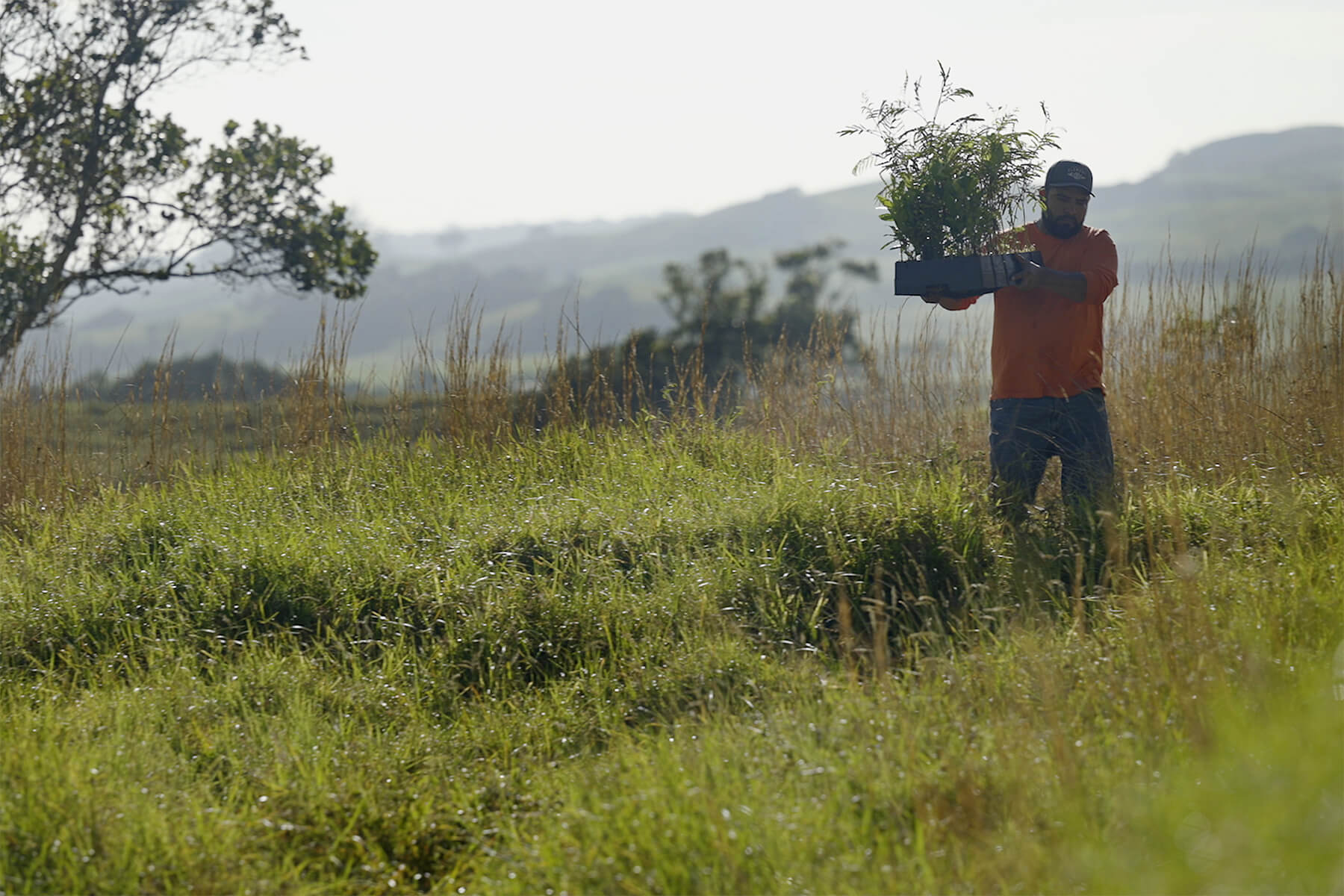
July 2023
Siglo Kapoaula - Working with Partners
Siglo Tonewoods has had great success working together with Hawaii Agriculture Research Center (HARC) for the seedlings, and Forest Solutions for efficient site preparation. This partnership enabled us to plant 26 acres more than originally anticipated, bringing the total for this year to 39 acres and 7,800 seedlings.
We are wrapping up our annual planting at Siglo Kapoaula this month, and have picked our first two seed pods from the 2021 progeny trial. These are the first of many disease-resistant seeds we expect to produce over the years to come. -
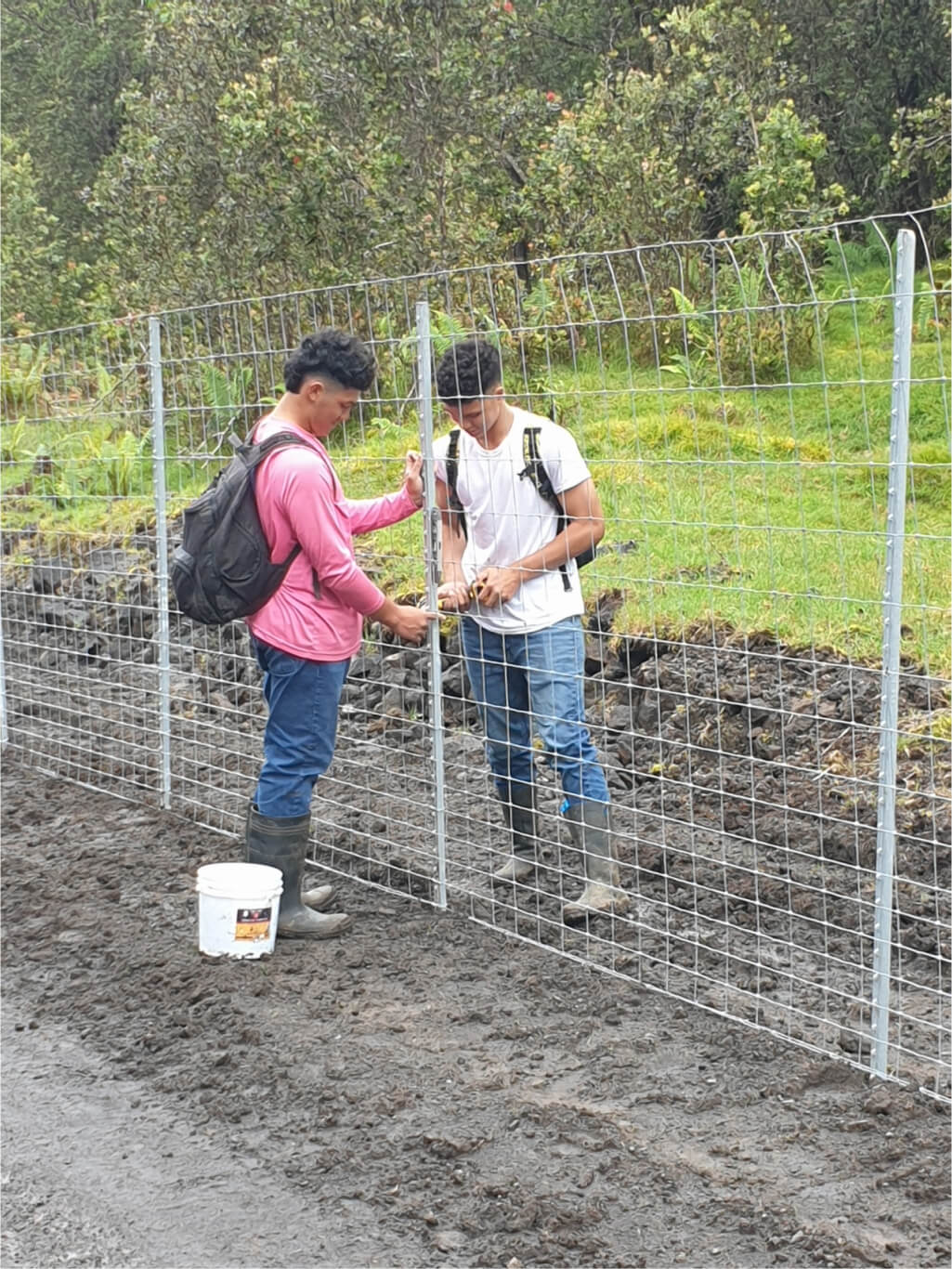
Zeiden and Zane Fujihara installing fence clips in Keālia, South Kona. We are enclosing 800 acres with a 6-foot high fence to protect the forest within.
June 2023
Forest recovery – Fencing and Weeding
In our other South Kona project, Siglo has completed nearly 2.4 miles of fencing to protect an additional 800 acres of degraded native forest. We expect to fully enclose the area in the coming months, and begin reducing the grazing animals within. This initiative begins the long journey toward forest recovery projects in South Kona that began in 2017.
Meanwhile, in Hōnaunau, which is 1,400 acres of recovering native forest, we keep working to reduce the incipient weed populations. Approximately 1,000 acres, or 75% of the project, have been treated for invasive weed species, including strawberry guava, ginger, banana poka and tropical ash. -
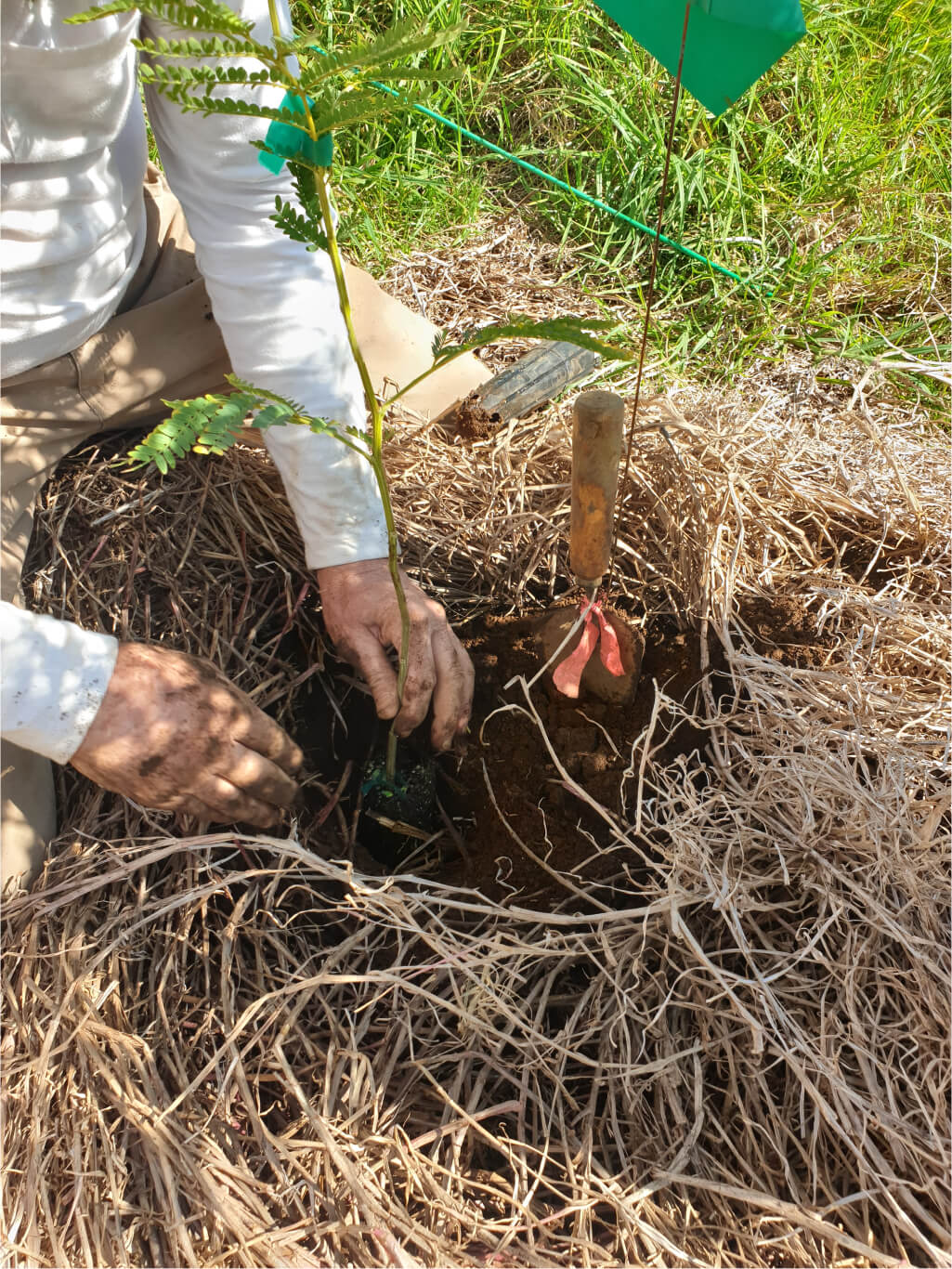
May 2023
Recovery Underway After 6 Years of Forest Management
In our older forest stewardship project, 1,400 acres continue to regenerate quickly now that the grazing animals have been excluded. In May we continued to manage the weed population; now approximately 1,000 acres, or 75% of the project, has been treated. We expect 1,000 plus seedlings from the nearby Kealakekua Forest Nursery in July 2023. These seedlings were produced with seeds from the very best trees within the project, enhancing future forest productivity and vitality.
-
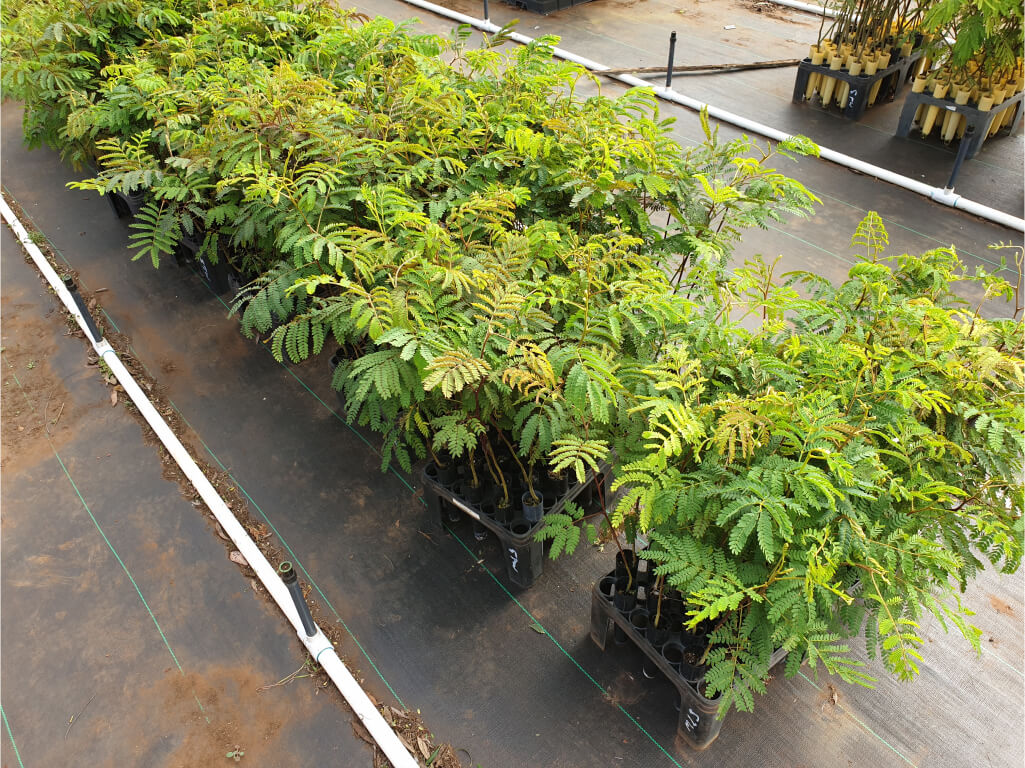
January 2023
Plant Check at Maui Native Nursery
In preparation for the upcoming planting season, it is important to check in with the grower to ascertain when the seedlings will be ready and optimal for planting.
Nick Koch visited Maui Native Nursery, counting out 2,340 wilt-resistant koa seedlings that were ready for shipment to the Siglo Holding Nursery near the Kapoaula planting site. Nick also had a chance to look over the 1,000 Cook pine being grown for the final segments of the windbreak planting. -
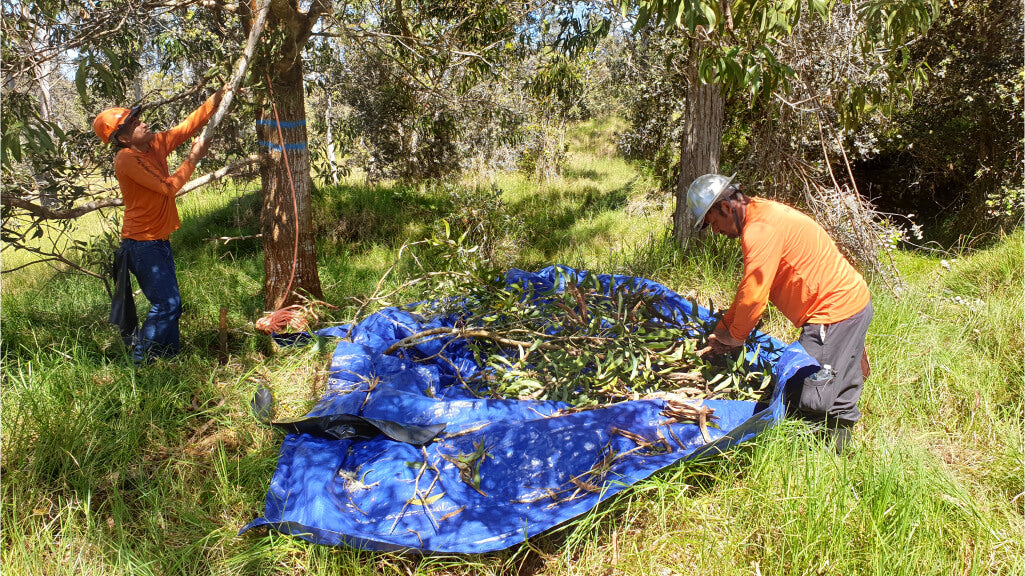
September 2022
Koa Seed Collecting with Forest Solutions
To identify candidate mother trees, Forest Solutions closely followed the procedure established in 2021 with the Hōnaunau Conservation Area koa seed collection. In areas with abundant koa trees at low elevations and with landowner permission, Forest Solutions set up transects throughout accessible areas of the properties, spaced about 100 meters from each other to locate candidate trees for seed collection. Selected trees are straighter with fewer branches, are healthy and produce seeds.
For the summer of 2022 effort, 81 new koa trees (those not previously screened for disease resistance) across nine different sites were considered, of which 54 trees had seed collected for disease resistance screening. Koa seeds were cleaned by Kealakekua Forest Nursery, managed by Forest Solutions. For each mother tree, a subset of approximately 100 seeds were sent to the Hawaii Agriculture Research Center (HARC) for disease screening. The remaining seed was dried and packaged for short‐term storage separated by mother tree. These will serve as accessions in an upcoming disease resistant seed orchard. -
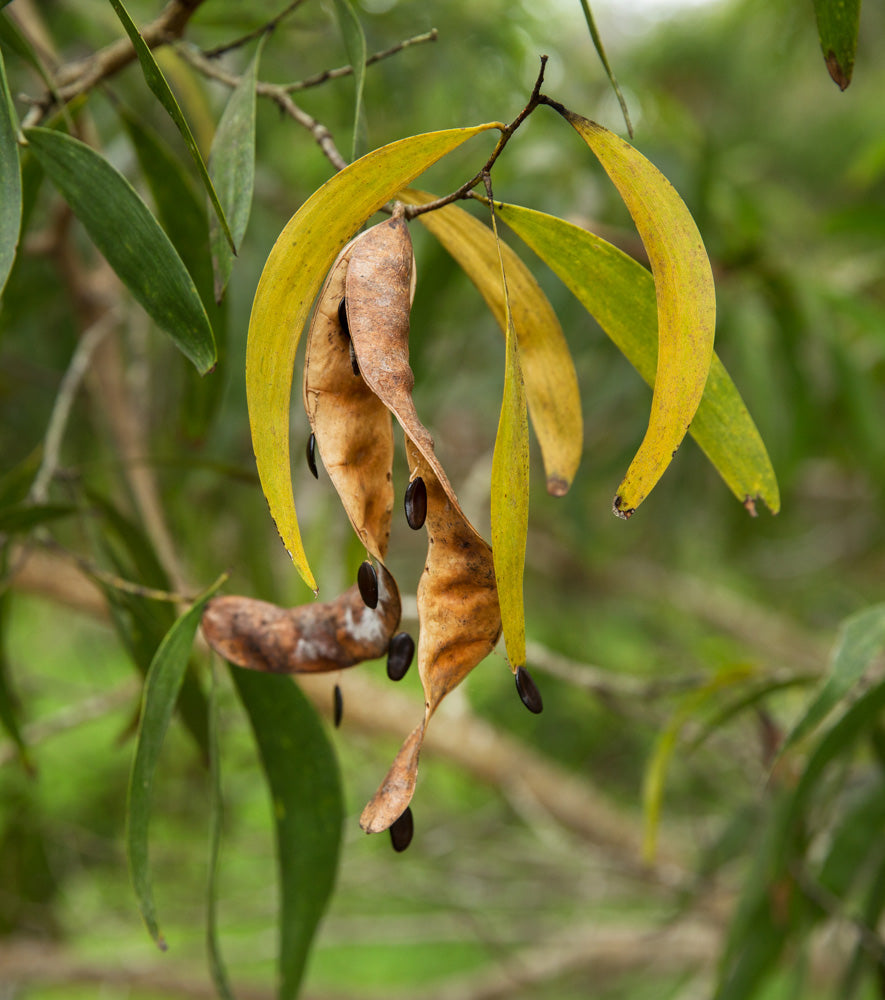
April 2022
Phase 2 Progeny Tests
At Siglo Kapaoula, we extended our research to include Phase 2 of a series of long-term progeny tests.
These pedigreed seedlings are from the best families identified in the most recent round of disease testing at Hawaii Agriculture Research Centre (HARC) and collections from the windward (east) side of Hawai'i Island. Data collected from these test trees will be used to design our next seed orchard in 2025.
We also established a short-term “site preparation" trial to compare several soil tilling, weed control, and fertilization options. This will be used to optimize seedling survival and growth rates at Siglo Kapaoula and other sites. It is also intended as a demonstration of site preparation techniques. -
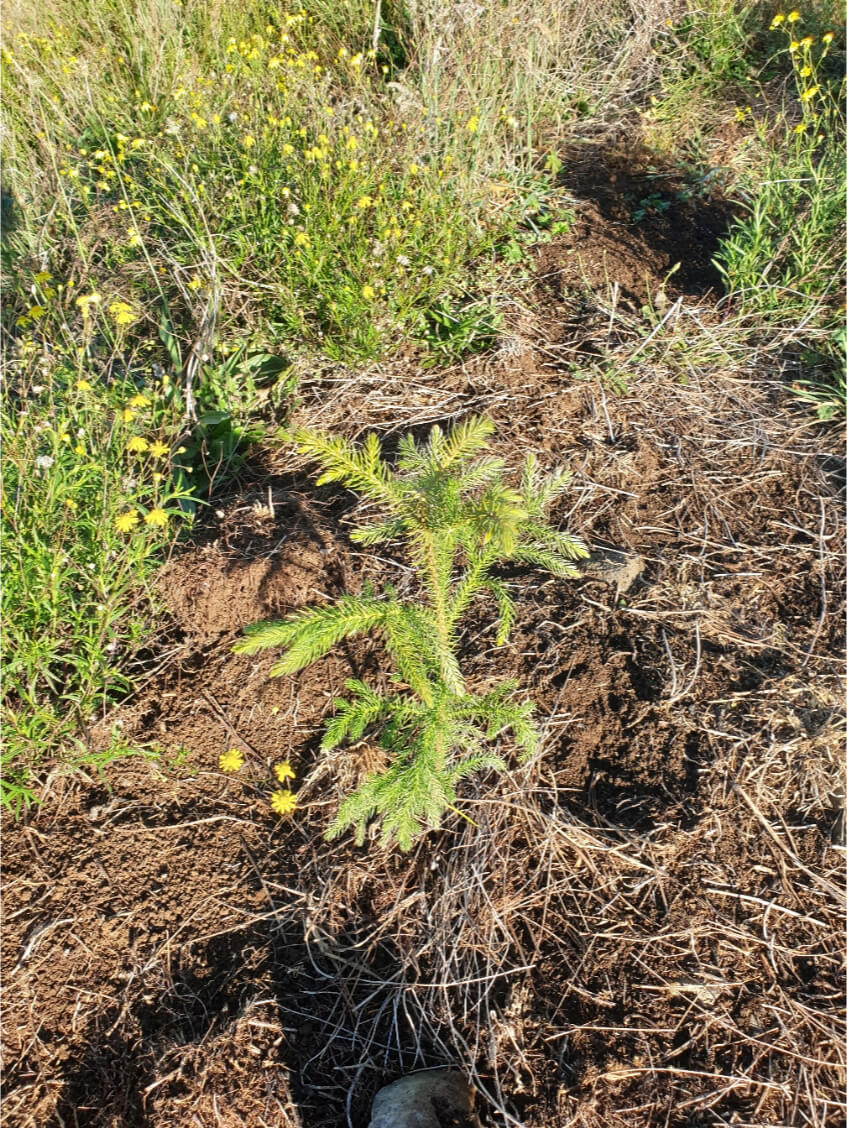
March 2022
Planted 12,500 Windbreak Trees
Our site has excellent soil, adequate rain, and great solar exposure, but it is also very windy. Young koa trees are easily damaged by the gusty winds we get on this site. Our normal daytime winds are 15-20 miles per hour with gusts to 25 mph.
To protect the new koa from harsh winds, we've planted thousands of fast-growing trees three rows deep along 8 miles of windbreak. We picked trees that are not invasive, are moderately fast growing and display either thick crowns or superior height – or both. These include eucalyptus that are known for their wood quality: Eucalyptus nitens, Eucalyptus fastigata, Eucalyptus dunii and Eucalyptus regnans. Evergreen species include Mexican cypress (Cupressus lusitanica), Cook pine (Araucaria columnaris), podocarpus (Podocarpus elongatus), and coastal redwood (Sequoia sempervirens).
While wood production is not the main objective, we did consider the eventual use of these trees as part of the program. -
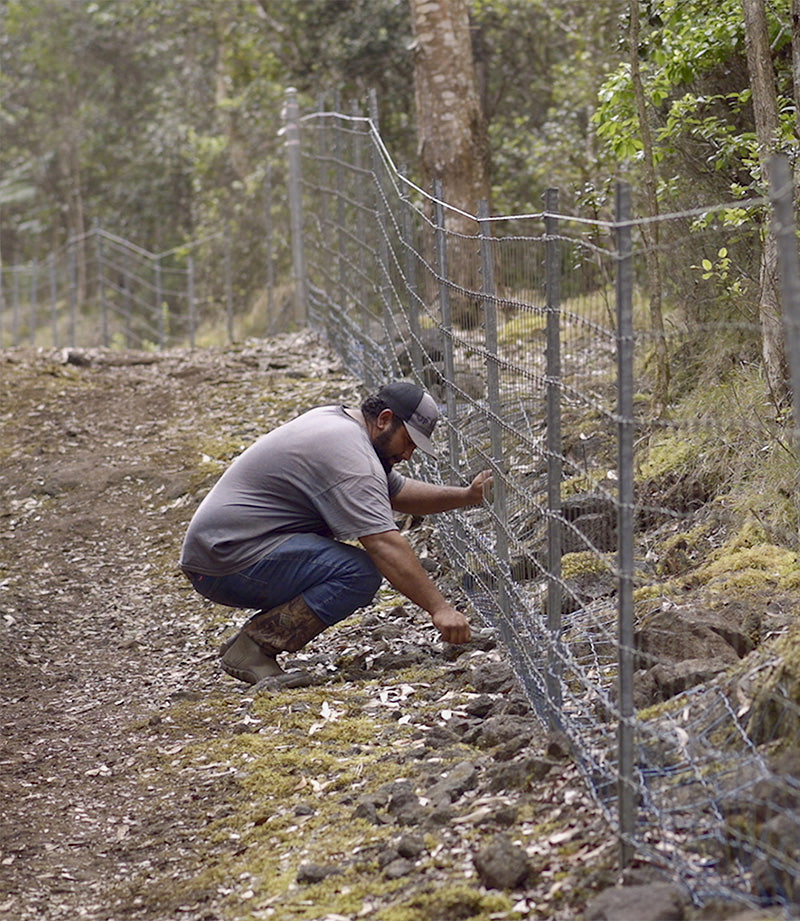
January 2022
Stewardship Conservation Project
Siglo began field work on a 5,200-acre stewardship conservation project in South Kona. Our first step in conserving the forest will be installing a 6-foot tall fence that is 5 miles long. This fence will protect about 800 acres of montane native forest habitat, and keep out the feral cattle, sheep and pigs.
Our long-term goal is to regenerate this project area over the next 25 years; there is almost no koa regeneration due to over 100 years of active grazing. When our work is complete, there should be a diverse native forest, free of predatory animals and with a much-diminished weed presence. We estimate that there will be a 10-fold increase in the koa volume on the property at the end of the project in 25 years. -
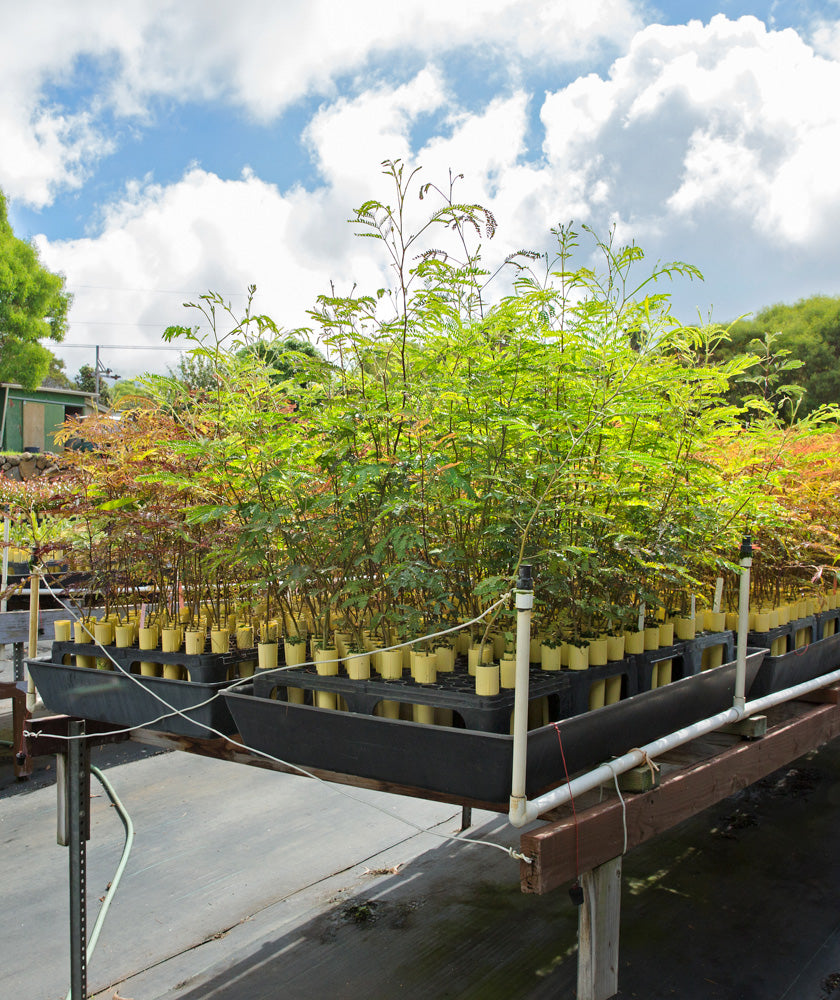
December 2021
Wilt Resistance Testing on Seedlings
Working again with our partners at the Hawaii Agriculture Research Center (HARC), we began a testing program on koa seedlings for genetic resistance to wilt disease.
Koa wilt disease was introduced into Hawai'i around 1980, and is now problematic throughout the islands at elevations below 2,500 feet ASL. As much as 80% of koa planted at less than 2,500 feet in elevation will eventually die from wilt, which usually makes its appearance at around the 4th to 7th year of growth.
Siglo Tonewoods is addressing the problem by working with HARC to evaluate low-elevation koa forests, collect seeds and expose and test the seedlings for genetic resistance to the disease. Seedlings from the wilt-resistant families will then be planted in a series of long-term progeny tests to find the most resistant and best performing koa tree to use in future seed orchards. -
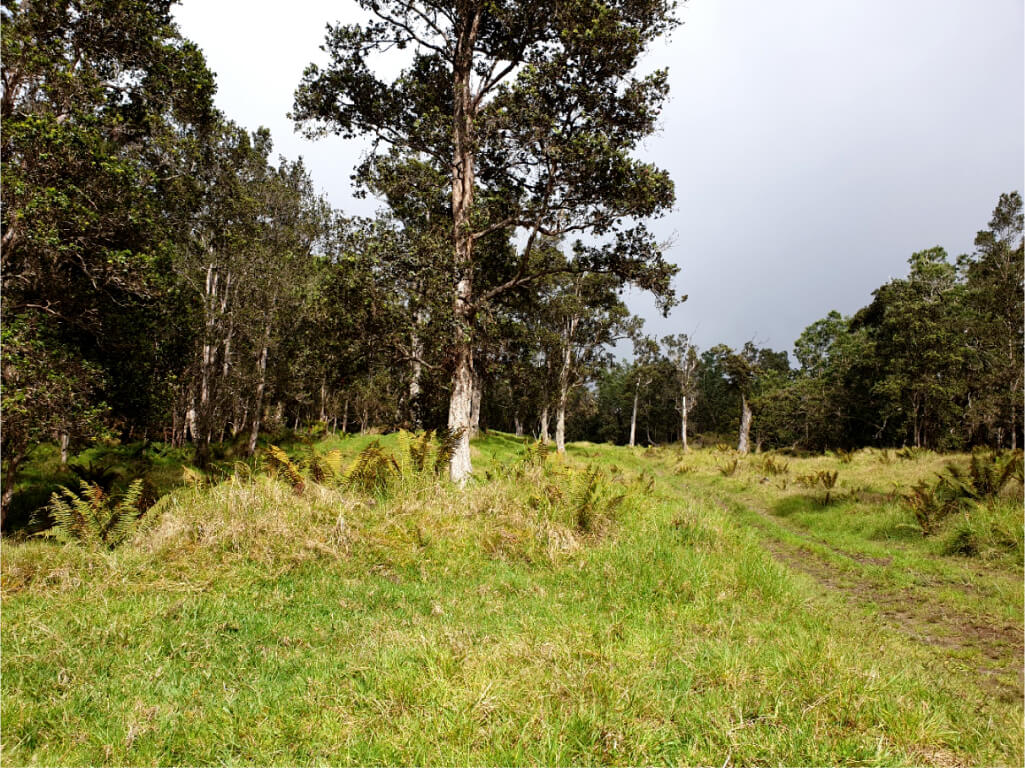
November 2021
Forest Stewardship License in South Kona
Siglo began work on a new forest stewardship license in South Kona. The initial project will protect 800 acres within the first 5 years, continuing on to regenerate most of the 5,200-acre parcel over a planned period of 25 years.
-
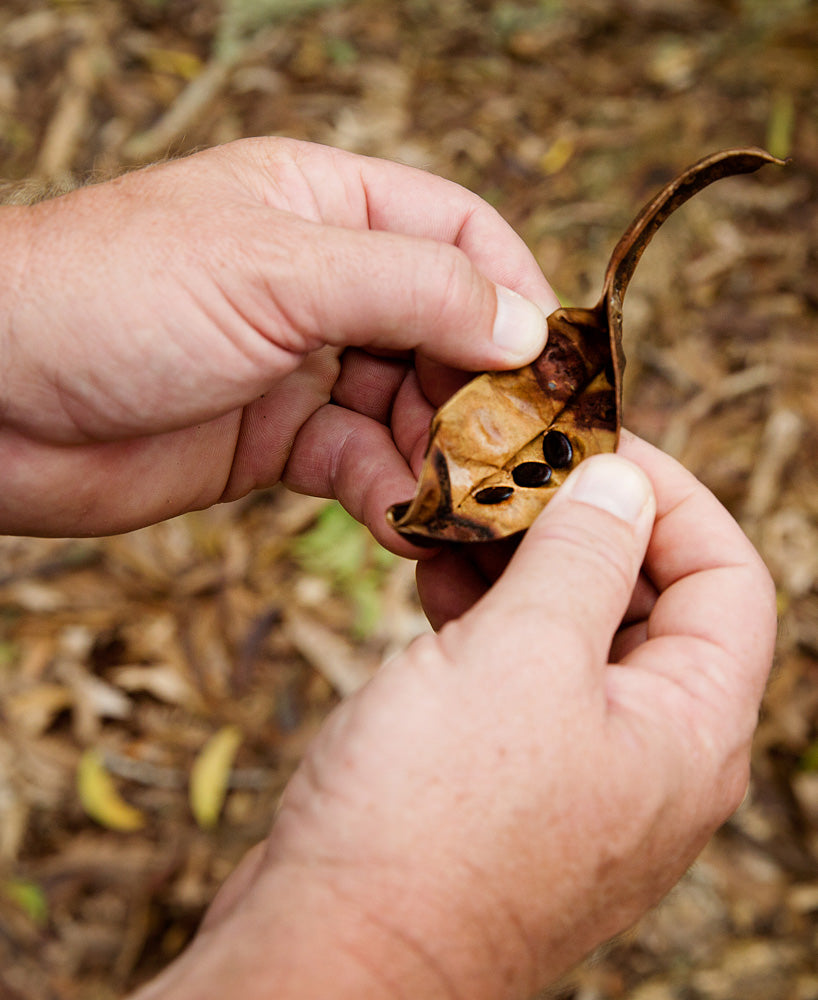
August 2021
Seed Selection Program Begins
To help reforest Hawai'i with the best quality and disease-resistant koa trees, Siglo began an island-wide seed selection and testing program to expand on the pioneering work done by the Hawaii Agriculture Research Center (HARC).
We evaluated thousands of koa trees in approximately 2,000 acres of native forests. Tree climbers were used to collect seeds from the best 42 of those ‘plus’ trees. Each tree was numbered and mapped to allow us to revisit in a future collection. About 100 seeds from each “mother tree” were sent to HARC for disease testing. Under laboratory conditions, the saplings were exposed to a heavy dose of spores from the fungus that causes koa wilt disease. New seedlings from the very best survivors of those families will be used to create future orchards. -
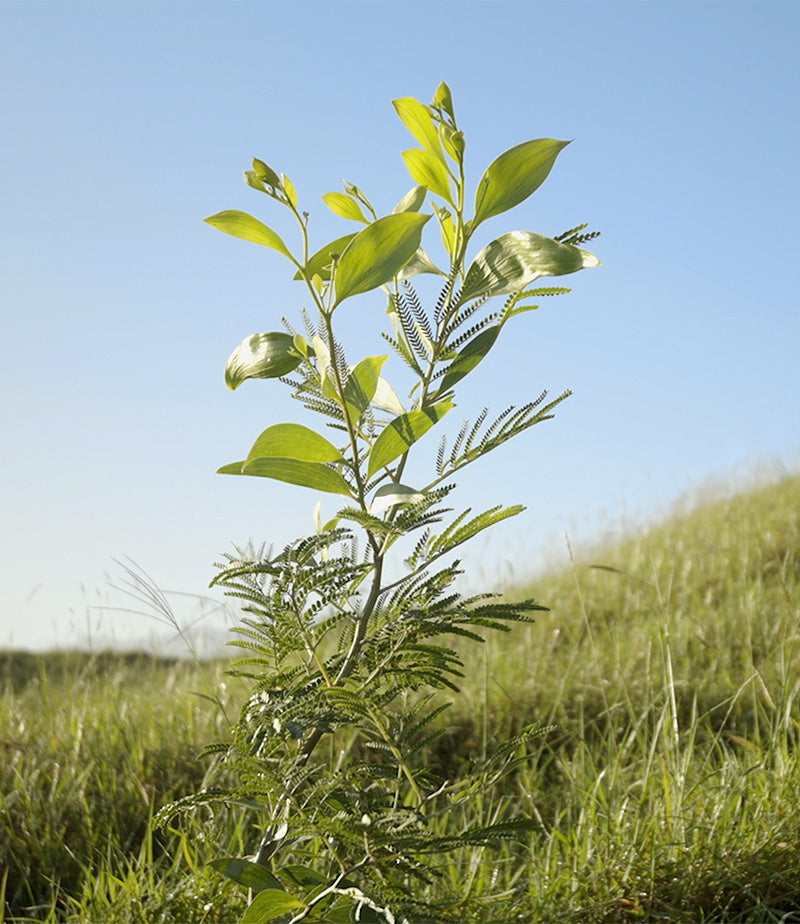
May 2021
Planted 20 Acres of Koa Forest
The State Board of Land and Natural Resources approved and financially supported Siglo's 10-year forest management plan. Over the next decade we plan to reforest 565 acres of the property with a mix of koa and other native forest species. The first potential harvest will take place around 2050, assuming all goes to plan!
The final Environmental Assessment and Finding of No Significant Impact can be found here. -
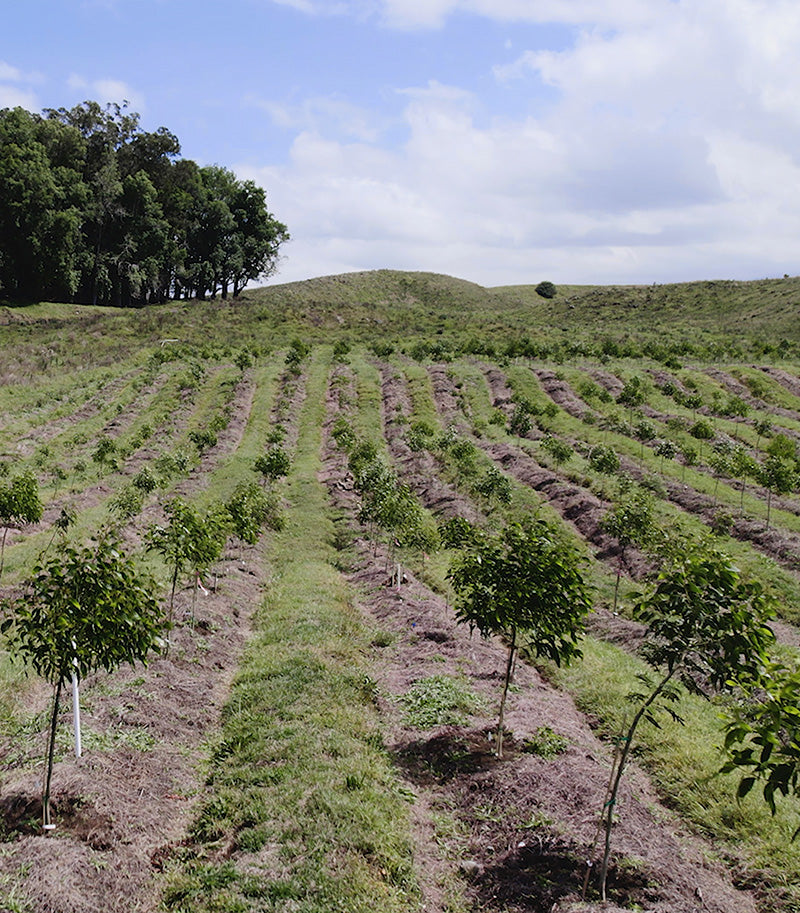
May 2021
Planting our First Seed Orchard at Siglo Kapoaula
Siglo collaborated with Hawaii Agriculture Research Centre (HARC) to establish a 1,600-tree provenance trial and seed orchard that will produce seeds for future reforestation projects for Siglo and our neighbors. This is the largest provenance and seed orchard in the State of Hawai'i and we hope to establish several more.
We planted pedigreed seedlings with the best disease resistance that HARC had available; that population should yield both Siglo Tonewoods and HARC large quantities of elite seed by about 2026, perhaps sooner. Through research and classic tree improvement, we are restoring koa across many environments throughout Hawai'i. -
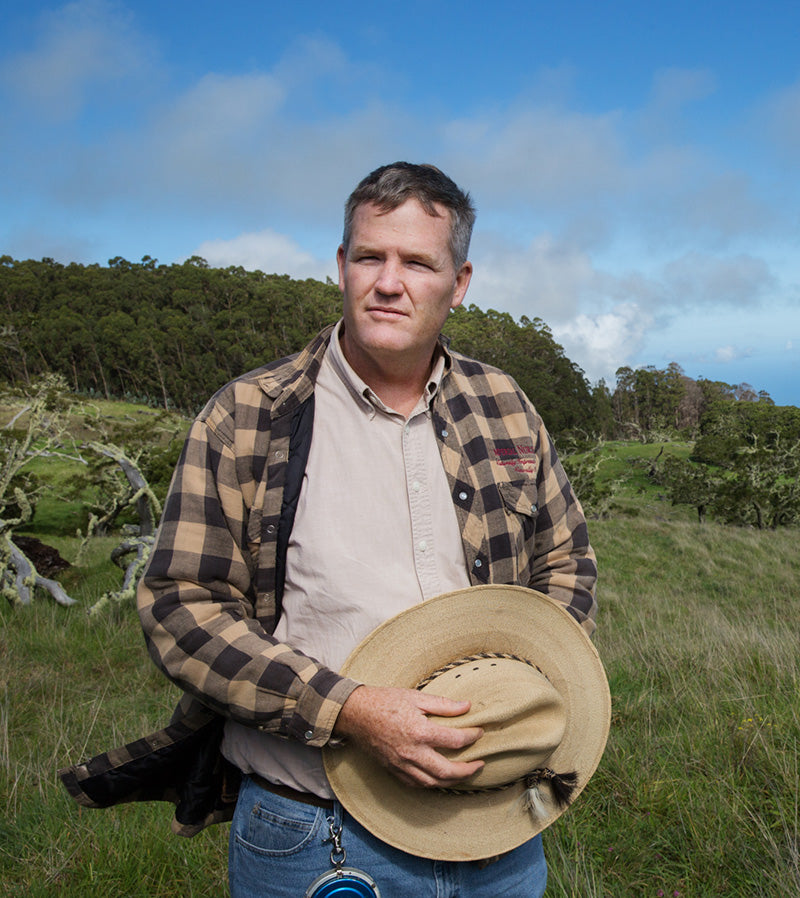
March 2021
Siglo Partners with Nicholas Koch
Nick Koch, a forester with extensive experience in managing Hawai'iʻs forests, became a partner with Siglo.
With 21 years of experience practicing forestry in Hawai'i, Nick is deeply invested in restoring, augmenting and improving the financial viability of Hawai'i’s native tropical forests.
At Siglo, we believe that by aligning the interests of the forest industry, landowners and the environment, our current generation can benefit from these forests, while passing on an improved forest resource for the next generation. -

August 2020
Removing Ungulates from South Kona Forest
Now that there is a strong fence surrounding our initial project in South Kona, Siglo has begun to remove the remaining feral animals from the forest. In all, 16 cattle and 74 sheep were driven from the fence unit. With the grazing animals gone, koa has begun to regenerate throughout the forest.
-
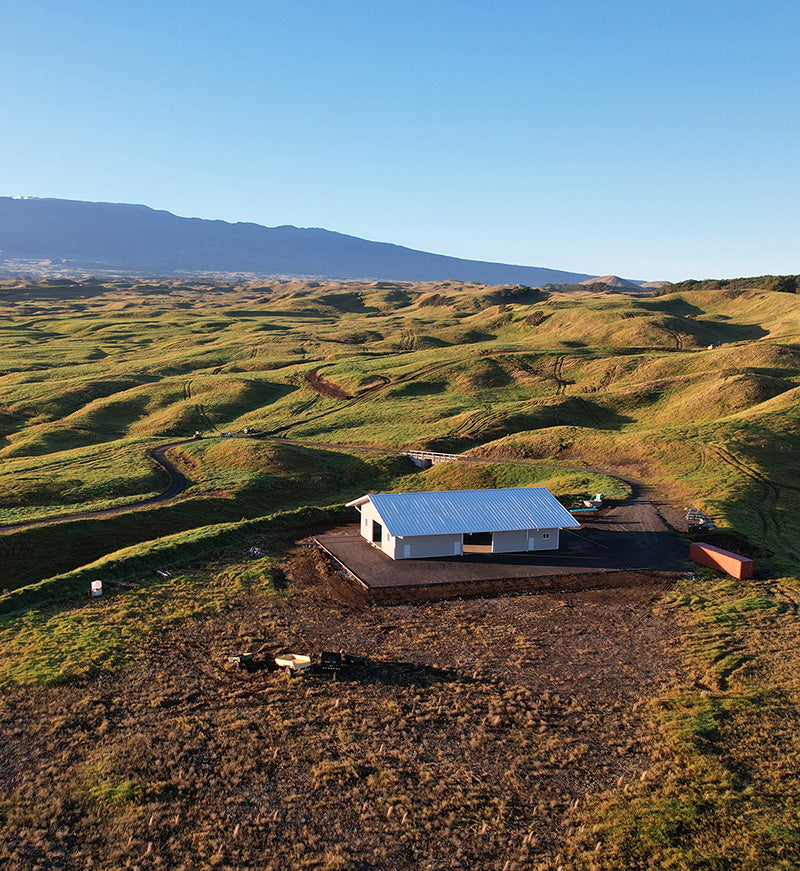
Summer 2020
Site Construction and Improvement
We began construction of a warehouse at Siglo Kapaoula and plan to use this site for a Hawai'i-based sawmill and wood drying operation. The goal is to cut koa and other locally grown hardwoods.
The Siglo mill and warehouse will provide technical and support jobs for the community. As well, the facility should help meet the demand for local wood, especially for koa wood, which is in short supply. Having the mill on Hawai'i Island also means that the offcuts produced by milling wood will remain in Hawai'i, rather than needing to be shipped to the continental US. -
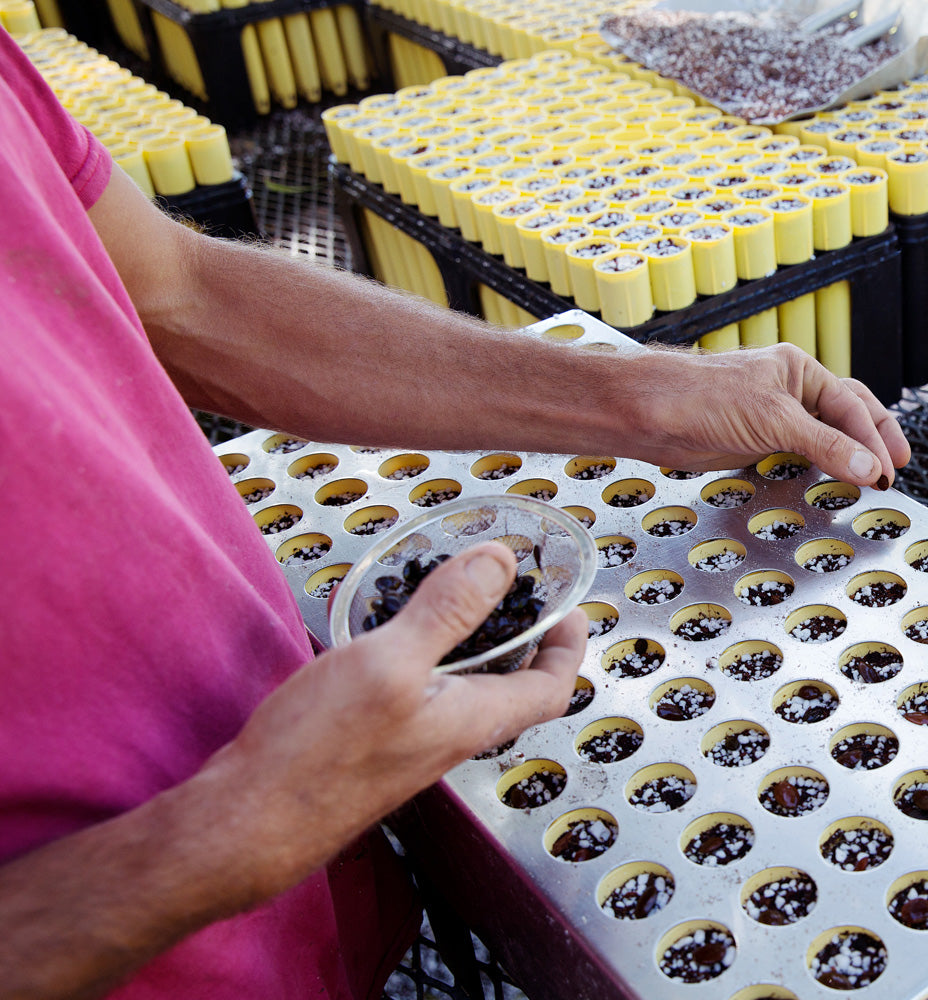
Sept 2019
Research Begins on Tree Improvement
For the purpose of koa tree improvement and seed production, Siglo has engaged Dan Cress, quantitative geneticist and owner of Regenetics. Our first task is to install a well designed progeny trial and seed orchard.
Together with the Hawaii Agriculture Research Center (HARC), Dan is assisting us in the design and installation of a series of experiments that will optimize the success of our seed production and reforestation programs.
As always, we hope to develop models for successful koa reforestation and afforestation at Siglo Kapoaula and beyond, and to inspire our friends, neighbors and fellow landowners to plant native forests for the future. -
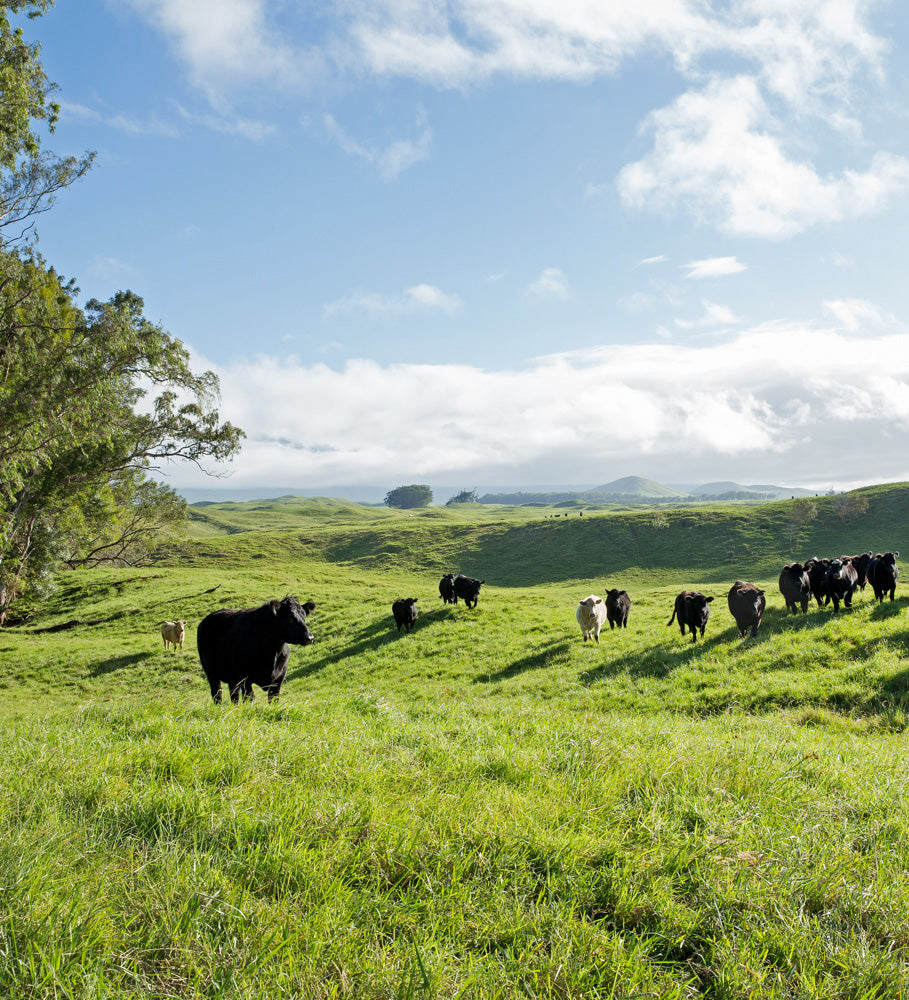
January 2018
Land Acquisition for Koa Planting
With an eye to the future of sourcing koa wood, Bob Taylor purchased 565 acres of land at Kapaoula, between Waimea and Honoka'a on Hawai'i Island.
Once a legendary koa forest, this area had slowly become grassland after years of cattle grazing. The land will be reforested with koa and koa-‘ōhi’a native forest, and become the primary site for koa seed orchard planting, as well as our planned sawmill. -

July 2017
A Market for Koa Veneer
Sliced koa veneer for guitar backs and sides has become almost unavailable. Siglo Tonewoods embarked on a project to solve this dilemma.
Veneer makes more efficient use of valuable koa wood, allowing for better utilization and affordability in musical instruments. We determined how to prepare logs for veneer, and arranged to have custom slicing done. The logs were not typical dimensions for veneer slicers, so it initially took some convincing. Now, the production of koa veneer has become a profitable business for Siglo, while ensuring that the koa veneer needs for Taylor Guitars, a primary user of koa, can be met. -
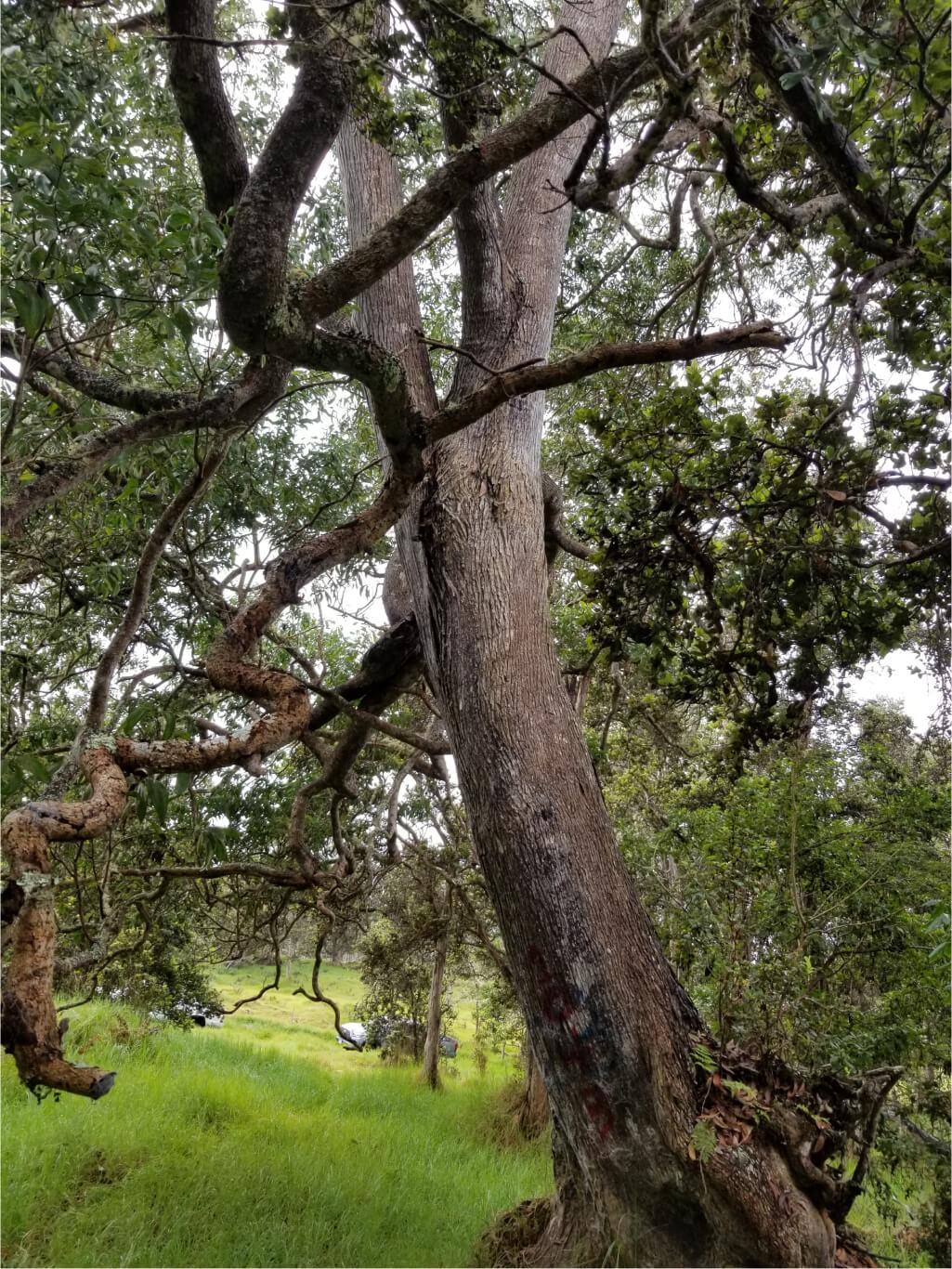
March 2017
Forest Restoration at Honaunau
A 5-year forest stewardship conservation agreement was made with a land owner on Hawai'i Island.
Forest restoration has begun with the installation of several miles of protective fence to remove feral grazing animals in exchange for selective harvest of koa in a degraded 1,400 acre forest. All proceeds will go into protecting and regenerating this forest over the next 5 years. -
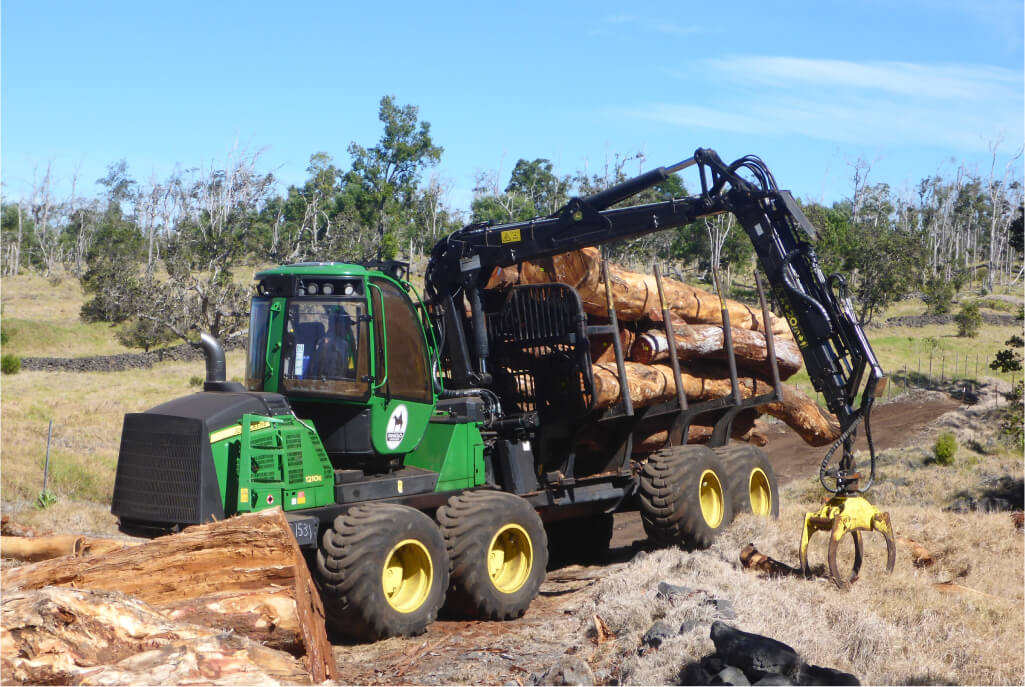
Nov 2016
Investment in Logging Equipment
As part of the goal for vertical integration, Siglo invested in new log handling equipment for better, more careful utilization of harvested trees.
Limited equipment is available on Hawai'i Island. Siglo brought over a John Deere forwarder, purchased in Scotland, a Unimog truck from Bavaria, and an excavator and bulldozer from mainland US. This equipment allowed us to implement a Reduced Impact Logging (RIL) methodology, where all wood is carried, rather than dragged, out of the forest. The results of this methodology are cleaner logs and less impact on the forest floor. -
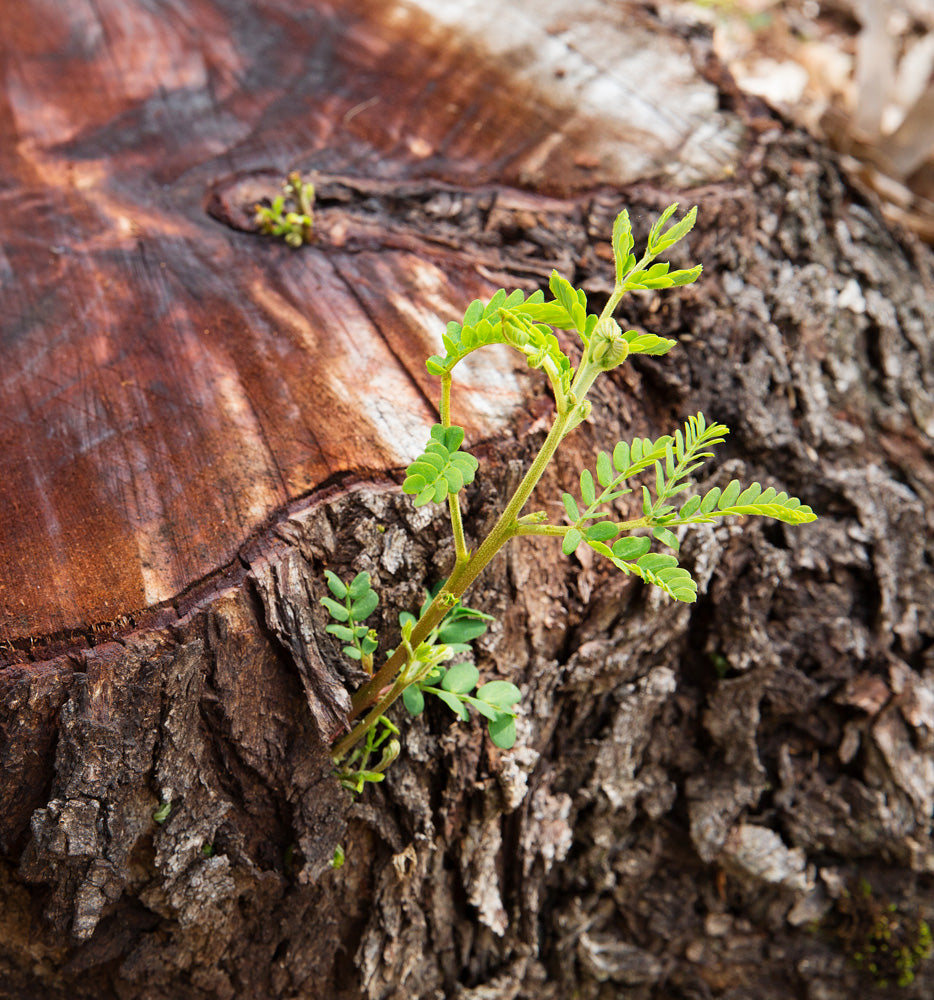
April 2016
Cultivating Extraordinary Koa
Working with Haleakala Ranch and Native Nursery on Maui, Siglo embarked on cooperative cultivation of elite lines of koa trees.
We started with koa trees that had superior wood characteristics, such as figured grain or striking colors. Kevin Burke from Pacific Rim Tonewoods, in collaboration with Native Nursery, then began the meticulous task of vegetative propagation of cuttings arising from these special stumps. Our collective goal is to restore the geographic range and quality of koa that had been diminished over the last centuries. -
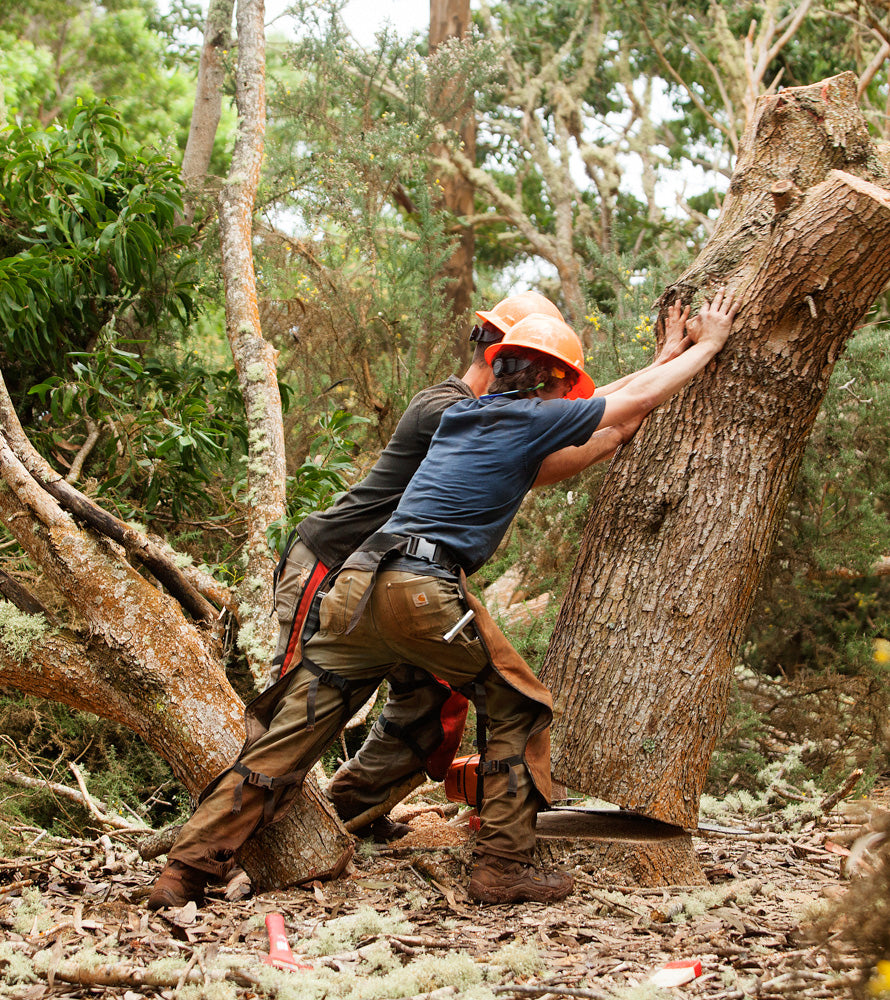
July 2015
Harvesting Koa at Haleakala Ranch
At Haleakala Ranch on Maui, Siglo harvested 30-year-old planted koa trees that had been stunted in their growth by introduced axis deer. Grazing animals are a common challenge for native forests of Hawai'i, nibbling away at native plants and shrubs, especially koa.
Until this Siglo project, koa less than 50 years old was not considered useable, even less so for musical instruments. The trees were small – stunted by grazing ungulates, and needed to be replaced due to incipient rot in the upper stems.
The resulting koa, while young and somewhat problematic, was in fact suitable for instrument making. With the help of Taylor Guitars, who went to great effort to condition the wood sufficiently, tens of thousands of guitars were subsequently built from these koa trees.
- July 2025
- June 2025
- May 2025
- April 2025
- March 2025
- February 2025
- January 2025
- December 2024
- November 2024
- October 2024
- August 2024
- July 2024
- June 2024
- May 2024
- April 2024
- February 2024
- January 2024
- December 2023
- October 2023
- July 2023
- June 2023
- May 2023
- January 2023
- September 2022
- April 2022
- March 2022
- January 2022
- December 2021
- November 2021
- August 2021
- May 2021
- May 2021
- March 2021
- August 2020
- Summer 2020
- Sept 2019
- January 2018
- July 2017
- March 2017
- Nov 2016
- April 2016
- July 2015
A Model for Commercial Native Forest Management
At Siglo, we’re not just planting koa trees—we’re building a
demonstration forest; a forest based on the best available science and tree growing techniques. We have invested heavily in research to further our understanding of how to grow native forest species. Focussing on koa in a commercial context, we're also planning for climate change resiliency through disease resistant cultivars. One day, we hope that Siglo will be a model for other stewards and land managers to consider koa forestry as part of their land management strategy.
SoundOff
Tavana
Tavana, musician and songwriter from Hawai'i, plays a koa guitar built by Taylor Guitars.










































